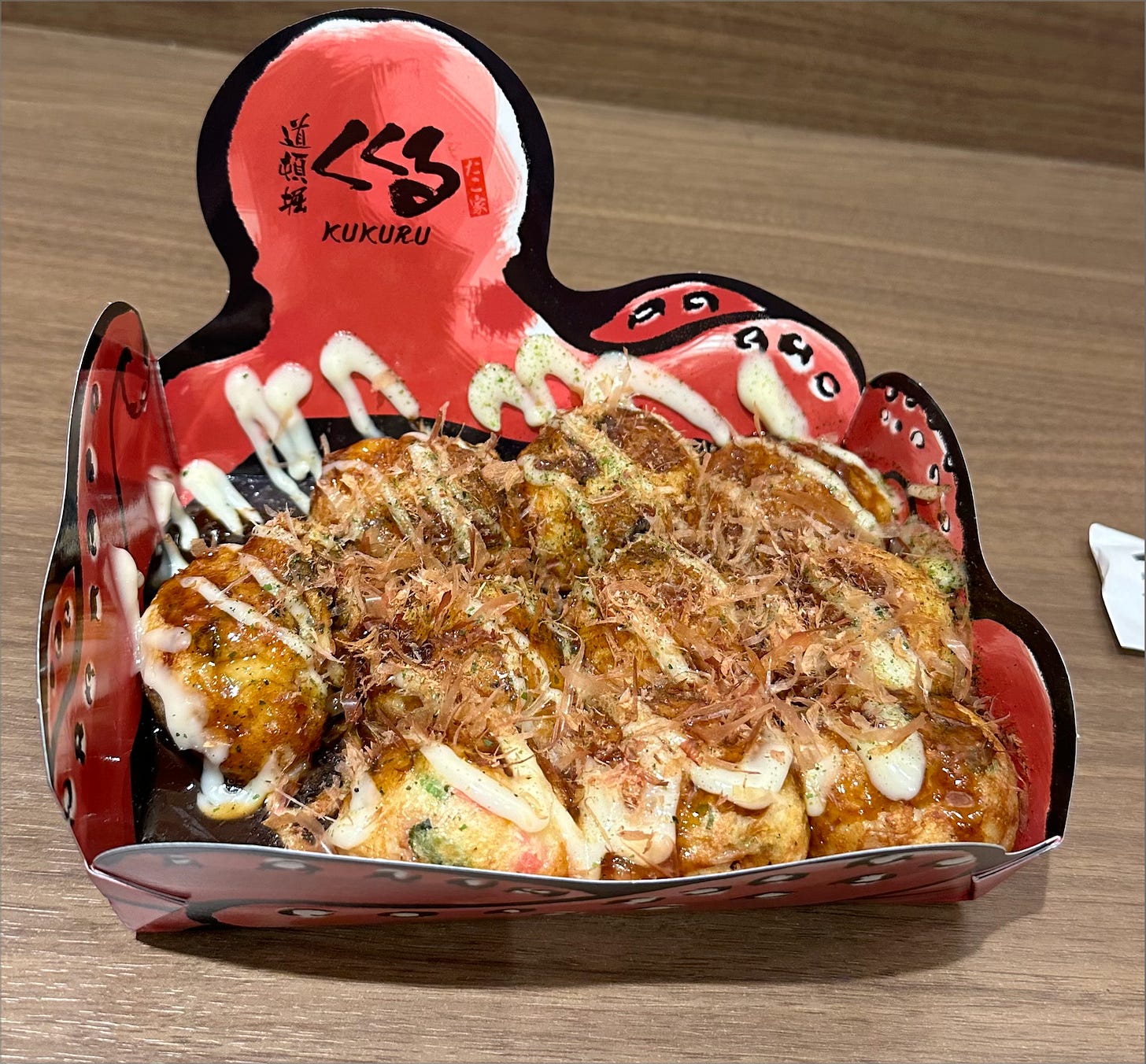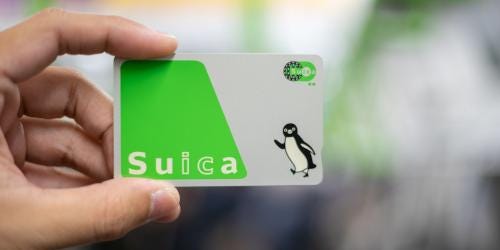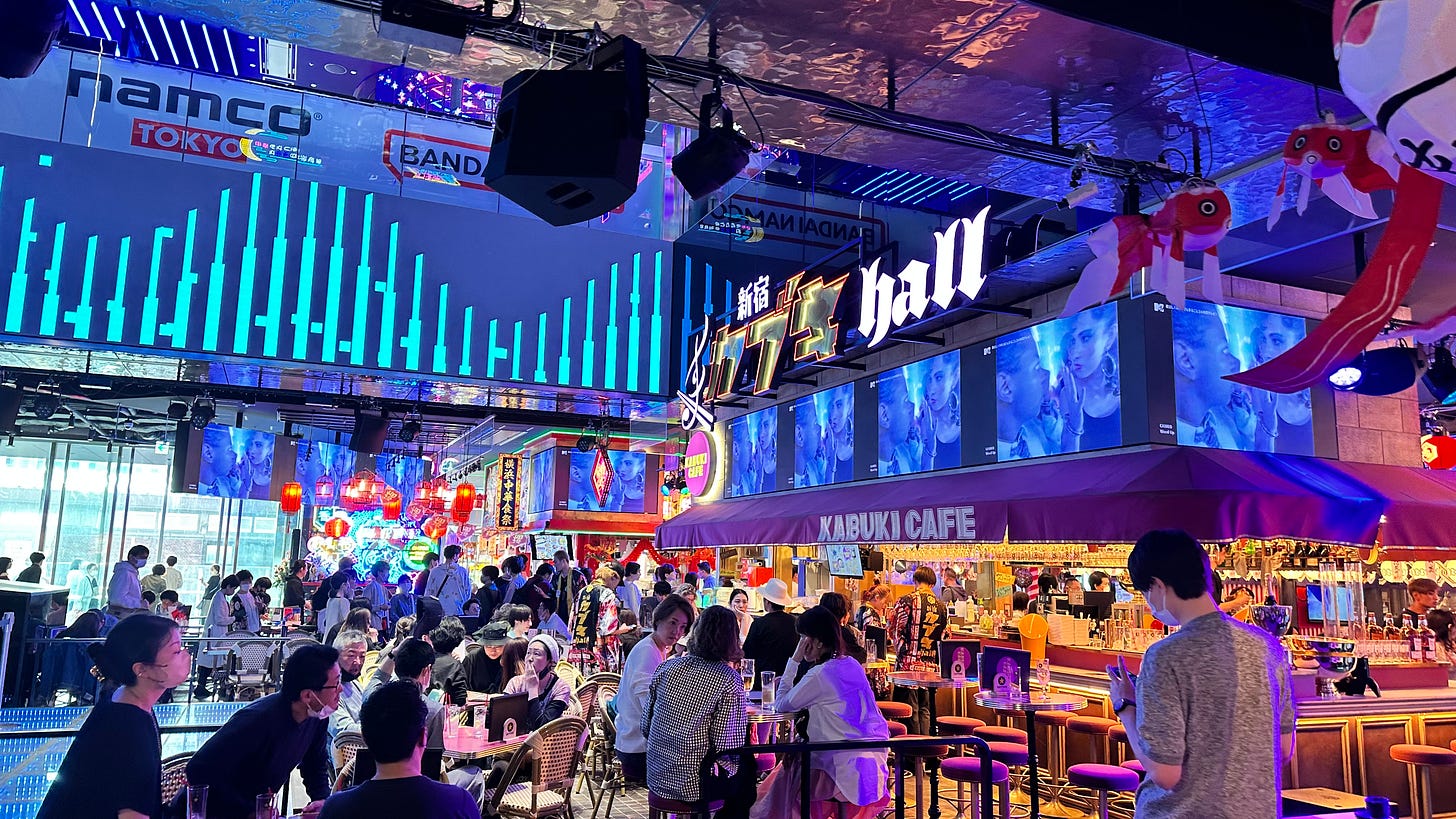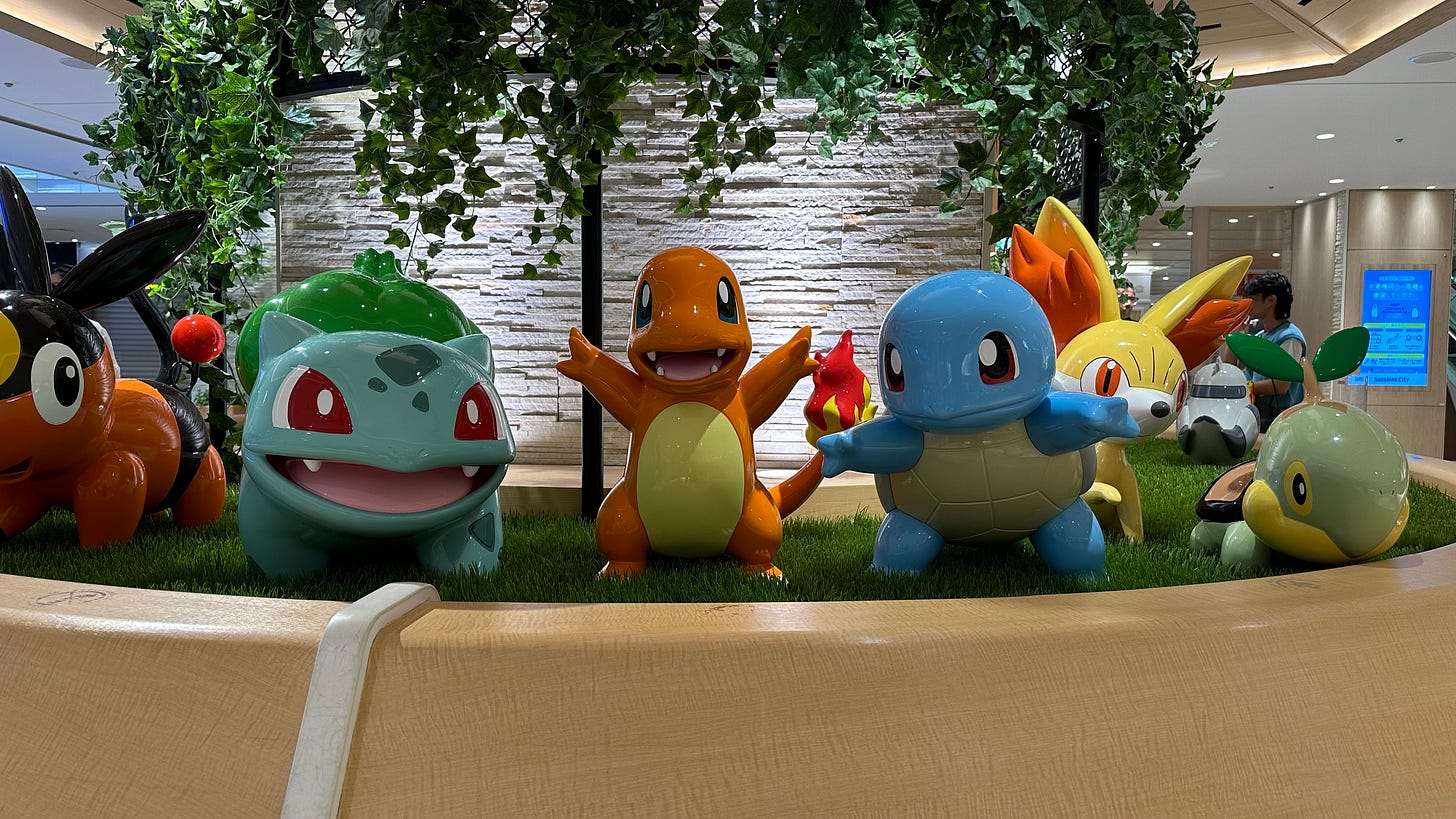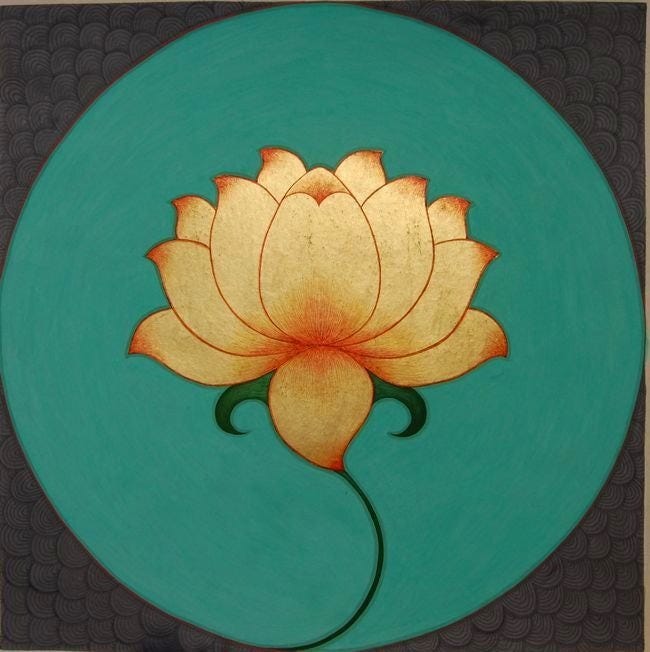Earlier this year I was lucky enough to spend about 3 weeks in Japan — the bulk of which was spent in the city of Tokyo. Tokyo is the largest city by population in the world, with a whopping 37 million people. For perspective, that is the equivalent of all of Canada’s population. A city with a population of a country.
Japan has always been on my list of places to travel, and post-COVID when the country finally opened up for tourism again, I knew I had to go. This trip has brought up feelings of being lost, but also having found a corner of the world that struck a chord of internal resonance inside of me that I didn’t know existed.
What sounds travel-cliché and paradoxical is, I think, an intra-psychic emergence from the kind of organized chaos that can only surface from immersing myself in the biggest metropolitan in the world. I don’t normally “travel blog”, but felt the urge to write and reflect on my experiences. I hope this is a slightly different spin on the idea, over the usual “YOU MUST VISIT THIS PLACE, LOOK AT THIS COOL EDITED PICTURE I TOOK”. Below, some brief reflections from my journey.
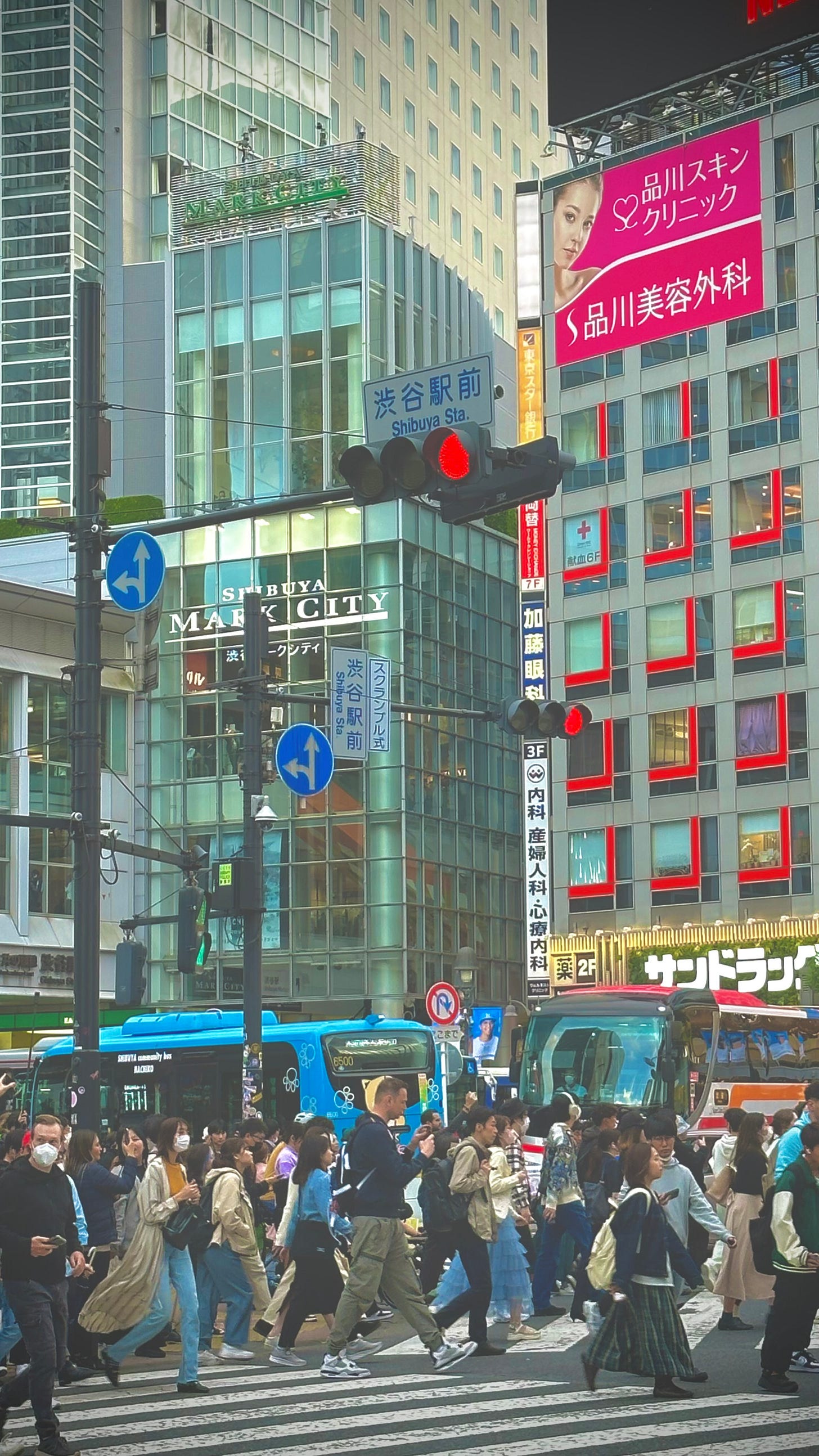
Priors
To preface here, I’m a baka gaijin who grew up peripherally exposed to Japan’s biggest global cultural export — anime. I know barely enough Japanese to order fried chicken at the local 7-11 convenience store. My time spent was largely visiting major tourist attractions, and while my feet were on fire from all the walking (10/10 walkability score), I’m sure I was exposed to less than 0.1% of the city in its entirety. I’m not alone in visiting Japan post-COVID — many tourists, online creators, streamers, influencers, and celebrities took the opportunity when their borders finally re-opened for international travel.
Culture
As a country, Japan is unique in that its cluster of islands comprise of people who share commonalities across ethnicity, language, social norms, and major historical influences. While geographically isolated, culturally, the country has had a very broad and dyadic influence on the rest of the world. Japan is known for its collectivistic cultural orientation. There is a strong adherence to hierarchy, family orientation, unified social norms, orderliness, and cleanliness. There are some downsides to consider as a foreigner considering relocation (like xenophobia), but the people are generally so polite, you would likely never face conflict or feel threatened for being a foreign tourist, at least in major cities.
In-Group vs Out-Group
Internal coherence and a sense of “group identity” is seemingly fairly strict. Even if you’re half-Japanese and born and raised in Japan, it’s common for mixed-race folks to be asked:
Where are you from?
How long are you in Japan for?
How did you learn Japanese so well?
Seemingly to fit in, one must speak Japanese very fluently, have awareness of Japanese culture, understand and follow their social norms, and look Japanese. If one or more of those criteria are missing, you tend to be considered an “out-group” member — a visitor of sorts, but never fully “Japanese”, and largely not accepted as a member of the “in-group”, even if you were born and raised there your whole life.
Dark Side
There’s of course a dark side of the culture. Long work hours. Strict corporate hierarchy. Immense pressure. Linear expectations around growing up through major life stages. Cooperative yet extremely competitive. Loneliness and isolation while bringing out some of the most interesting and flourishing subcultures in the world. A declining birth rate. Major sectors of the economy having little to no growth for decades. Stark differences between major technologically advanced cities and more rural parts of the country. An over-reliance on plastics for day-to-day items like food, packaging, and clothing. Little to no public trash cans (!)
Bright Side
On the bright side…
Food
Japan has food and food logistics figured out. The country has some of the best tasting food in the world. Most food logistics around the world tend to make some trade-off between price, freshness, and accessibility. For example, a lot of food in North America tends to at one point be frozen, or have a bunch of preservatives in it, to maintain shelf life. If the food is fresh, its expensive, or not as easily accessible. If its accessible, its likely not as fresh or healthy. Defrosted bread with preservatives tastes different than a fresh loaf that was baked two hours ago. With Tokyo’s population density and high foot traffic, food is always fresh and there’s plenty of local options for bars, restaurants, taverns, and eateries everywhere you look. Fresh shelf items in stores get replenished sometimes multiple times throughout the day. There’s 24/7 convenience stores and vending machines on nearly every street, which also get stocked regularly. It’s a paradise of sorts for foodies, and a sort of proof that food can actually be fresh, cheap, and easily accessible, without trade-offs.
Logistics & Transit
This one is somewhat all-encompassing, but Japan has its logistics down. Trains, busses, and any form of public transportation are extremely reliable and timed to the second. Maneuvering around train stations can be a bit confusing to a newbie, but they are well-designed enough to manage high foot traffic, multiple interconnected transit lines, public hygiene considerations (like, actually having clean public bathrooms), and more. Its the attention to detail in engineering and design of the city that makes the entire experience feel so remarkably considerate for its people, and for tourists.
The Suica card is a pre-paid card that works across all major rail lines across Tokyo. The card works at many vending machines, conveniences stores, and local businesses centered around transit stations. The card takes about 10 seconds to add to your iPhone or Apple Watch, and lets you hover your wrist in front of a machine and pay for what you want — without ever opening your device!
The transit system in many developed Asian countries seem to integrate payment infrastructure with NFC-enabled devices in local economies, in a way where everything seems to just magically work. Meanwhile here in North America, New York (probably the most comparable North American city to Japan’s Tokyo), will soon (by 2024-25) integrate their OMNY payments infrastructure across its metro line, with an official app and formal support beyond the metro still “in the works”. Tap to pay will finally be consistently available, but will still require the user to go through Google Pay or Apple Pay and manually require payment authentication with Face/Touch ID. Seemingly this system won’t work with any existing express mode options (which work seamlessly even if your device runs out of battery or opening any apps). These features are leveraged and integrated in national transit systems like in Japan and China.
It seems like a trivial thing to harp about, but the simplicity and seamlessness of the commuter/consumer experience of advanced public transit systems like in Tokyo, is a reflection of a competent government and its people having solved and scaled thousands of iterative engineering problems to make this whole thing continuously work on a set of complex backend payments, economic, technological, and engineering infrastructures. It was a moment of realization for me of how technologically behind, and disenfranchised, a lot of our public systems are here in North America, from other parts of the world.
Noise & Cleanliness
This one ties in with the general politeness of Japanese people. For being the biggest city in the world by population, it is so incredibly clean and quiet. I think this partially has to do with how well they’ve designed their high speed rail lines for soundproofing, layered traffic across different floors (above and below ground!), minimizing sound from having fewer cars on the road, and having a strong and cohesive social etiquette around public mannerisms that everyone seems to follow.
As one example of this, I remember seeing an older Japanese businessman having a lengthy and engaged conversation over the phone with someone, as we were waiting for our train. When the train arrived and the doors swung opened, commuters instinctively knew which side to exit from, following the arrows and floor markings, while the businessman and I were waiting patiently in a straight line for everyone to get off, first. The second he got on the train, he probably told the person on the phone that he was about to get on the train, and promptly said goodbye. He seemed deeply engaged with the conversation and could have easily continued it in the train, but its considered extremely rude to be talking in public and making any “excess noise”. Instead, he occupied a corner of the train and started playing a mobile RPG game on his phone, while holding a food wrapper for what I can only imagine was his lunch (remember how I said there’s like, no garbage cans?)
The strict adherence to social norms and consideration for others is paired with a heightened sense of responsibility for oneself - to be quiet, responsible, to keep in your personal space, and be respectful of others. Its this kind of eerie blend between having a high sense of personal responsibility for the self, and consideration for social cohesion among others, that I think can’t be replicated as fluidly in any other major city in the world. Despite there being no public trash cans and high foot traffic, the streets are largely clean, noise pollution is generally very minimal, people keep to themselves and are very respectful, and things just seem work as they are expected to.
Trust
This one is probably the most subtle, yet personally significant thing I can mention. There was one situation where we were sitting at a table in a fast food place, and at a table next to us, a Japanese guy was working on his MacBook and had his iPhone, a portable charger, and his day-bag sitting openly on the table. It was only about 10am but the place was already fully packed. We were sitting next to him, having breakfast and planning our route before venturing out for the day, when suddenly he decided to get up.
Without a second thought, he got up and started walking, probably to use the washroom. To our surprise, he left all of his stuff there on the table. An expensive bag, a MacBook, an iPhone, a fancy portable power bank, a pair of expensive Ray Bans… Pretty much everything he brought with him. 5 minutes went by.. Then 10 minutes… Then 30. As we were about to leave, we saw that he strolled back nonchalantly to gather his things, while holding a shopping bag in his hand.
This was a guy. In a fast food restaurant. In a busy shopping complex. Of the biggest city of the world. Sitting next to a couple of foreigners. Who left thousands of dollars of stuff openly. To go and shop for 30 minutes. Not for a second did he seem worried at all about his stuff getting lost, stolen, or that anyone would take his seat while he was gone.
This kind of assumed safety and security, where one expects nothing to happen to them or that their stuff might get stolen in their absence, was a real glimpse into the high levels of collective trust in social norms, public safety, and responsibility in the country. In most other major cities in the world, this guy’s stuff would likely have been gone within minutes, and his seat occupied soon thereafter.
There were many other ways we experienced this. Most bikes were parked outside of small shops, boutiques, and shopping complexes — with no bike lock on them! There was little to no anxiety on people’s faces (though it is probably masked well, N95 or not). There was still the living heartbeat of a city, but on decaf coffee. I felt care-free, not guarded, not overly alert. There was no felt sense of potential danger because social norms refracted through each individual — blanketed over the layered feats of human engineering that unified Tokyo’s architecture, space, and social cohesion. It was a unique dérive of psycho-geography in a city experience unlike any other.
Healing
This is somewhat of a mental health blog, after all! Can’t skimp out on how this all might impact mental health now, can we?
One thing I sometimes ask my clients is — where do you feel at home in the world? The phrasing of the question is intentionally vague and broad. That felt sense of being “at home” can manifest with specific people, food, experiences, streets, music, nostalgia, or anything else. It doesn’t have to be where you were born or raised, but where you feel safe, connected, with some semblance of family, community, connection, history, purpose. Japan, and specifically Tokyo, brought up that internal resonance in many odd ways that I haven’t felt traveling anywhere else.
The idea of dérive is the psycho-geographical equivalent of mind wandering, daydreaming, creativity, play. New ideas replicate and evolve like bacteria in a petri dish. New interconnected places evoke spontaneous movement. Cultural acceleration and memetic resonance make you feel like you’re safe, included, and a part of something greater.
Dérive involves actively observing and interacting with the city, paying attention to architectural details, social dynamics, sounds, smells, and other sensory stimuli. It aims to break free from the constraints of daily routines, encouraging participants to question the dominant narratives and power structures that shape urban spaces.
In essence, dérive is a form of psycho-geographical exploration, blending artistic expression, urban exploration, and social critique. It invites individuals to engage with their surroundings, immerse themselves in the unique ambiance of a city, and uncover new insights and experiences. Tokyo's urban landscape is a labyrinth of streets, alleys, and neighborhoods that offer endless opportunities for discovery. The city blends traditional and modern architecture, creating a very dynamic contrast. Its one of the only places I’ve seen that allow for ancient temples and serene gardens to coexist alongside futuristic skyscrapers and neon districts.
When it comes to feeling at home, being connected, and living with purpose, I wonder how much of an influence our environment has on us, and how much our psycho-geography can affect our mental health and mood. Do siloed neighborhoods help or hinder the ability to build social trust and norms? How many of our health problems are tied to driving everywhere instead of walking? How much of our lives are shackled to routine and urgency? What are the systems holding back technological innovation in public spaces? When was the last time you saw a display of public art that deeply resonated with you?
These elusive concepts of space, place, safety, and connection can commonly feel missing in folks who have dealt with chronic anxiety, depression, and even PTSD. One can feel detached, dysregulated, lonely, and isolated. Tokyo gave me a glimpse of a social system and experiential landscape that is setup in these subtle, but significantly different ways from Western public space.
Such a setup makes me wonder how much of a downstream impact urban design decisions have on social detriments related to safety, security, mental and physical health, healing, and connection. Sometimes, you don’t realize what’s been missing until you are soaked in its essence — a felt sense of being at home, away from home.


